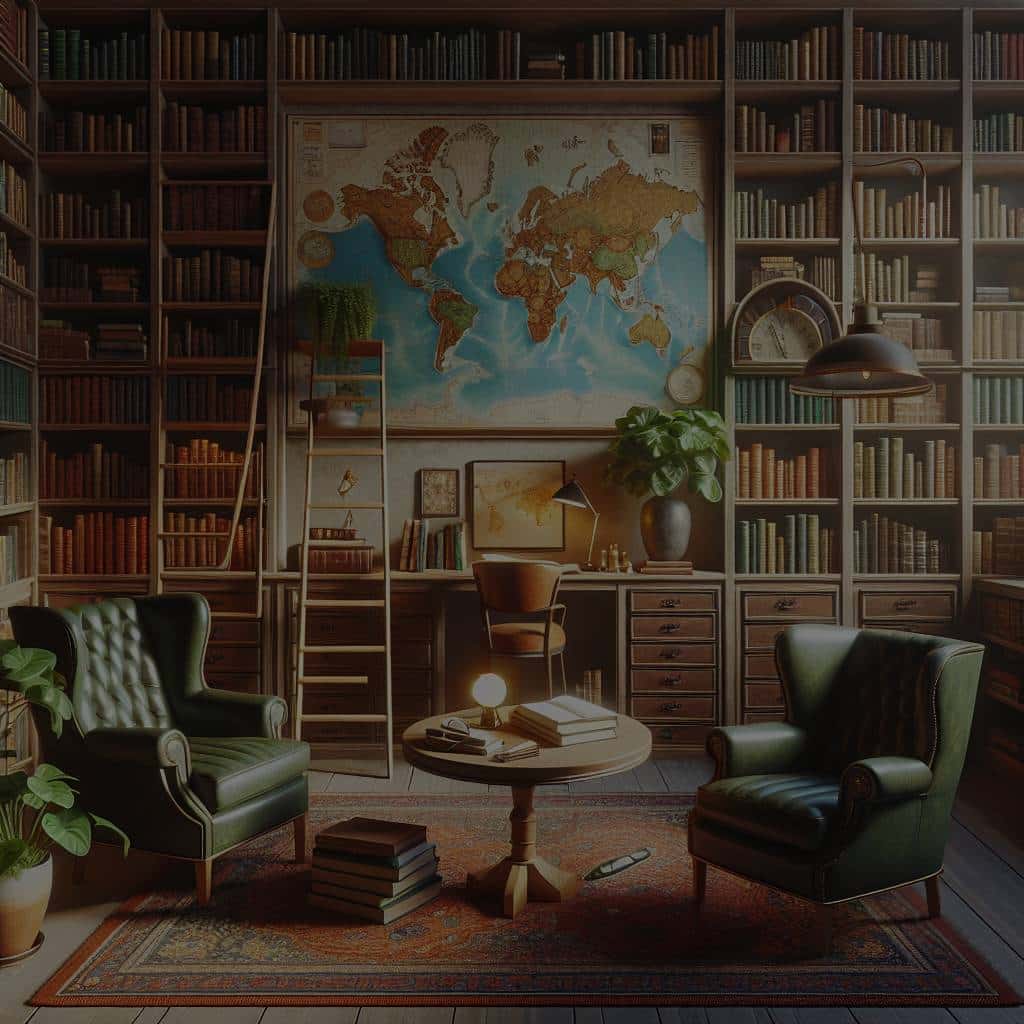What Are the Best Organizational Systems for a Home Library by Author?

Books are a medium for adventure, knowledge, and inspiration. For zealous readers, organizing a home library can be a rewarding pursuit. In this article, we will discuss several strategies for sorting and storing your books, highlighting the best organizational systems for your home library by the author. We’ll explore ideas from simple shelving solutions to genre-based classifications, and offer tips for maintaining a space that is as functional as it is inviting.
1. Organizing by Author
A common method for organizing a library involves sorting books by the author’s name. This system is particularly useful for those of you who often remember a book by its author, rather than its title.
A découvrir également : What Are the Best Native Perennials for a Low-Maintenance Home Garden?
Start by grouping books from the same author together on a shelf or a particular section of your room. Then, arrange these author groups alphabetically. If you have multiple books from a single author, you may also consider organizing them by the date of publication or in the order of a series.
While this method is straightforward and easy to maintain, it may not work as efficiently for those with vast collections spanning multiple genres. If you’re a fan of both fiction and non-fiction, for instance, you may find it odd to see a serious history book next to a light-hearted romance novel just because they were penned by the same author.
A découvrir également : How to Create an Energy-Efficient Aquarium Setup at Home?
2. Organizing by Genre
Organizing books by genre can make your home library feel like your personal bookstore. This system allows you to browse your collection according to your mood or interests at the moment.
To use this method, divide your books into broad categories such as mystery, romance, science fiction, biographies, history, etc. Within these categories, you can further sort books by author or title. Be sure to create labels or signs for each genre to aid in finding and replacing books.
A genre-based system is particularly beneficial for readers who tend to stick to one type of book at a time. However, it might pose a challenge for those who enjoy cross-genre books or have a diverse reading taste.
3. Organizing by Color
For those of you who care as much about how your home library looks as how it functions, organizing books by color can be an appealing method. It can turn your bookshelves into a design feature, adding a visual pop to your room.
Start by grouping your books by the color of their spines, creating a rainbow effect, or stick to a monochromatic scheme. You could also match the books with the room’s décor, using them to accentuate the color scheme of your space.
This method, while aesthetically pleasing, does have its downsides. For one, it can be tough to locate a specific book unless you remember its color. Hence, this might not be the ideal system for book-heavy readers.
4. Organizing by Size
Organizing books by size is another practical system, particularly when dealing with varying shelf heights and limited storage space. It can also lend a clean, uniform look to your bookshelves.
You can classify books into categories like pocket-sized, standard hardcovers, oversized art books, and more. Arrange them in a way where the tallest books are on one end, gradually decreasing to the shortest. This system can help to maximize your shelf space and prevent the shelves from looking cluttered.
However, be aware that a size-based system could split up book series or books by the same author, which might not sit well with some book lovers.
5. Hybrid Organizing: A Mix of Systems
If no single system seems to meet all your needs, don’t hesitate to blend different methods. For instance, you could sort books by genre first, then organize each genre by author or color. This approach will allow you to create a library that is both functional and aesthetically pleasing.
When combining systems, balance is key. Keep the organization intuitive, so you and any visitors can easily find books. Remember, your home library is a reflection of your reading habits and tastes, and it should serve its purpose: to encourage and facilitate reading.
Organizing a home library is a highly personal endeavor, and there is no one-size-fits-all solution. The best system is one that fits your unique collection, space, and reading habits. So take the time to assess your needs, experiment with different methods, and create a library that you’ll love to spend time in.
6. Utilizing Cataloging Software
In the digital age, cataloging software can be an excellent tool for managing your home library. It can be especially useful for those with extensive collections who need to keep track of what books they own, have read, or plan to read.
Consider using an app or a website that allows you to create an online catalog of your books. You can scan the barcodes of your books or manually enter their ISBN numbers to add them to your library. Some software even offers the option to input where the book is located in your home, making it easier to find when you want to read it.
Moreover, digital cataloging offers features like creating tags or categories, making it easy to organize books by author, genre, color, size, or even reading status. It can also help keep track of loaned books, so you never lose a book again.
Although cataloging software can be time-consuming to set up initially, it can be a time-saver in the long run, especially for those with a larger collection. However, the effectiveness of this system relies on your commitment to updating it each time you acquire or lend a book.
7. Using the Dewey Decimal System
For the serious bibliophiles out there, consider adopting the Dewey Decimal System. This is the same system used by most public libraries and is designed to categorize and store books efficiently.
The Dewey Decimal System classifies books into ten broad categories, such as literature, science, social sciences, etc. Within these broad categories, there are subcategories that further refine the classification.
To implement this system in your home library, you would need to look up the Dewey Decimal classification for each of your books. This can be a daunting task if you have a large book collection. However, it can be especially valuable for those with a diverse range of books since it allows for highly specific categorization.
Be mindful, though, that this system may not be suitable for everyone. It is more complex and requires more effort to maintain than other methods listed here. But for those with a serious love of organization, adopting the Dewey Decimal System can be a rewarding challenge.
In conclusion, organizing a home library can be a satisfying project that enhances your reading experience. Whether you choose to sort by author, genre, color, size, or even use cataloging software or the Dewey Decimal System, remember that the best organizational system is the one that suits your needs and your reading habits.
A well-organized home library not only allows you to locate your favorite books easily but also makes your living room or study a more inviting place. It can be a conversation starter when a post shared on your Instagram reveals your color-coordinated bookshelves or when visitors discover your dedication to the Dewey Decimal System.
While organizing your library might feel like a daunting task, take it as an opportunity to reconnect with your books. You might stumble upon a forgotten favorite, or find inspiration for your next read. So, however you choose to organize your books, enjoy the process. After all, every book in your collection tells a story – and so does the way you choose to display them.
